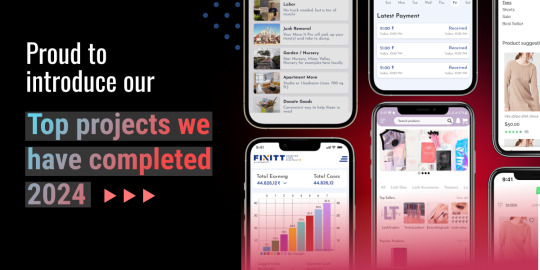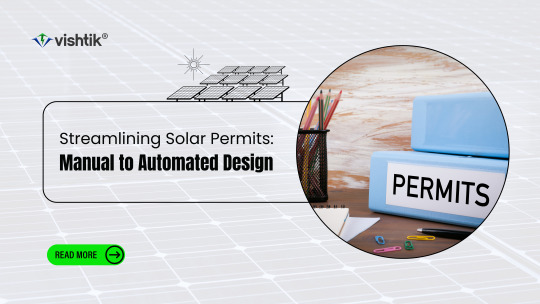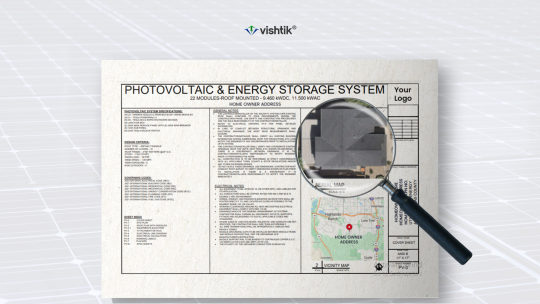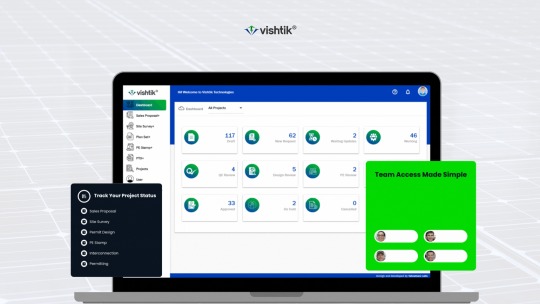#SolarApp
Explore tagged Tumblr posts
Text
Proud to share our Top Project we have completed in 2024

We are proud to present to you our latest mobile app project. This app is designed with the latest technologies and features, designed to make your experience better and more useful.
Healthcare App Our healthcare app brings health services to your fingertips. It includes features like doctor appointment booking, health report tracking, and health advice. This app is the easiest way to take care of your health. 2.Artificial Intelligence (AI) Our AI-based solutions make your work faster, smarter, and more efficient. Whether it is data analysis, automation, or personal assistant, AI can be used to enhance your productivity.
3. Fintech App This app is a great solution for your financial needs. It includes features like personal banking, digital payments, investment management, and peer-to-peer money transfer. Experience fast and secure transactions.
4. Management App The Management App is designed to keep your projects, tasks, and team organized. It has features like real-time tracking, time management, and analytics, which increase your productivity.
5. ChatGPT Applications
Our ChatGPT application development services provide customized solutions for various sectors. Custom Chatbots Design and Integration. AI-powered applications for business automation Customized AI solutions for education, healthcare, and financial services Real-time conversational applications to improve user experience
#SMTLabs#HealthcareApp#SolarApp#ArtificialIntelligence#FintechApp#EducationApp#ManagementApp#AITechnology#ChatGPTDevelopment#Innovation#DigitalSolutions#SustainableDevelopment
0 notes
Text
SolarAPP+ and Instant Permits: Are They Really Saving Time for Installers?

Permitting delays are one of the most persistent bottlenecks in residential solar deployment. Long wait times, inconsistent requirements, and manual plan reviews across different jurisdictions have made permitting a frustrating (and expensive) step for installers.
But in 2021, the U.S. Department of Energy (DOE) launched SolarAPP+, a free, automated permitting platform aimed at accelerating the process. It's designed to review residential solar plans in minutes instead of weeks—a potential game-changer.
Now, in mid-2025, it's time to ask the big question: Is SolarAPP+ really saving time for installers?

What is SolarAPP+?
SolarAPP+ (Solar Automated Permit Processing Plus) is an online platform developed by the DOE’s National Renewable Energy Laboratory (NREL). It's built to automate plan review and permit issuance for code-compliant rooftop solar systems.
Key features include:
Instant plan review for standardized residential PV systems
NEC and IRC code compliance validation
Seamless integration with local building department workflows
Automatic generation of inspection checklists
It’s voluntary for local governments, but when adopted, it can replace weeks of permit processing with same-day approvals.
Where It Works Well
SolarAPP+ is currently being used in dozens of cities and counties across the U.S., including major adopters like:
Los Angeles, CA
Pima County, AZ
Pleasanton, CA
Denver, CO
Nassau County, NY
In jurisdictions that have fully implemented the tool, installers report:
Drastically reduced permitting timelines (from 2–3 weeks to <1 day)
Fewer back-and-forth corrections
Standardized requirements
Faster installs → faster payments
This makes a huge difference in reducing soft costs and accelerating cash flow for installers and project developers.
The Catch: Limited Adoption
As of 2025, only a small percentage of AHJs (Authorities Having Jurisdiction) have adopted SolarAPP+. That means most installers still face:
Manual plan reviews
Long approval timelines
Inconsistent codes and documentation
Permit resubmissions
In many areas, SolarAPP+ isn't available yet, and some building departments remain hesitant to implement it due to:
Staff training requirements
Concerns about oversight
Software integration challenges
Until adoption is widespread, the platform’s benefits remain localized.
What Can Installers Do?
If you're a solar installer or project manager, here’s how you can leverage SolarAPP+:
Check if your local AHJ supports it. Use NREL’s SolarAPP+ locator to find out.
Advocate for adoption. Many city officials are unaware of SolarAPP+—your voice matters.
Design systems that qualify. Not all systems are eligible—SolarAPP+ currently supports standard grid-tied, roof-mounted PV systems without storage in most cases.
Train your team. Get familiar with SolarAPP’s inputs, outputs, and inspection guidelines to streamline workflows.
Final Thoughts
Yes—SolarAPP+ really does save time. But only where it’s adopted.
The technology is proven. It works. Installers in supported areas are shaving weeks off project timelines, improving customer satisfaction, and reducing soft costs. But the full impact will only be felt when more cities and counties adopt it.
If we want to scale solar faster and more affordably, automated permitting platforms like SolarAPP+ are a crucial piece of the puzzle.
Visit: https://www.linkedin.com/pulse/solarapp-instant-permits-really-saving-time-installers-0qd9c/
0 notes
Text
Residential vs. Commercial Solar Permit Design in 2025: The Ultimate Checklist

Thinking about solar in 2025? Whether you’re planning a rooftop system for a home or a large solar installation for a business, one thing’s for sure—you’ll need a proper permit design.
But here’s the catch: Residential and commercial solar permits are two completely different beasts.
That’s why we’ve put together this easy-to-follow checklist to help you understand what’s needed for each. Whether you're a homeowner, business owner, or solar contractor, this guide will help you save time, avoid headaches, and stay compliant.
Residential Solar Permit Design Checklist
If you're working on a home solar system, the permit process is usually simpler—but still very important. Here's what most building departments will want to see:
Site Plan
Basic roof layout with panels clearly marked
Distance from roof edges
Pathways for emergency access (fire code)
Property boundaries with setbacks
Structural Details
Can the roof handle the panels?
Rafter/truss spacing and material
Mounting system specifications
Sometimes you’ll need a structural letter
Electrical Plan
One-line diagram
Info on inverters and solar modules
Wire sizing and safety calculations
Point of interconnection (like your main panel)
Local Rules
Every city or county has slightly different codes
Some require HOA approvals too
Must-Have Documents
Product datasheets
Installer’s license
NEC code compliance
Homeowner-signed agreement
Commercial Solar Permit Design Checklist
When it comes to commercial solar, the rules get a lot stricter—and the documentation more technical.
Site Plan
Ground or rooftop system layout
Show all shade, obstacles, and utility easements
Mark access roads and traffic flow (if ground-mounted)
Structural Engineering
Full engineering report with PE stamp
Wind, snow, and seismic load analysis
Soil testing (for ground-mount systems)
Roof reinforcement plan if needed
Advanced Electrical Plan
Three-line diagram
Metering and load calculation
Battery integration, if applicable
Inverter string layout
Fire & Building Safety
Access pathways and setback distances
Battery and fire suppression plans
Commercial building codes
Utility & Grid Connection
Utility approval documents
Smart inverter compliance
Grid impact study (for larger systems)
Interconnection agreement
Other Required Docs
PE stamps (electrical + structural)
Liability insurance
Operations & maintenance plan
As-built drawings (after installation)
What’s New in 2025?
Solar permitting is changing fast. Here are some 2025 trends:
AI-based tools are helping designers create faster, more accurate plans
NEM 3.0 in California means battery storage is more common (especially for commercial)
E-permitting platforms like SolarAPP+ are speeding up approvals
Some AHJs are requiring detailed performance modeling for large systems
Make Permitting Easy with Vishtik
Let’s face it—permit design is one of the biggest pain points in the solar installation process. That’s where Vishtik comes in.
We offer:
Permit-ready drawings for both residential and commercial systems PE-stamped structural and electrical plans Quick turnaround times 100% AHJ-compliant designs
Whether you're a solo installer or a large EPC, Vishtik helps you stay ahead of the curve—so you can focus on building, not paperwork.
Learn more about our Permit Design Services →
Final Thoughts
Getting a solar permit doesn’t have to be a long, confusing process. When you know exactly what’s needed—and the difference between residential and commercial requirements—you’re already halfway there.
Need help with your next project? Let Vishtik take care of your permit designs from start to finish. Accurate. Fast. Reliable.
0 notes
Text
SolarAPP+ Has Cut 150,000 Business Days of Solar Permitting Process
SolarAPP+ Has Cut 150,000 Business Days of Solar Permitting Process
View On WordPress
0 notes
Text
0 notes
Text
NREL Signs MoU With UL Toward Commercialization of SolarAPP+ Automated Permitting Tool


The U.S. Department of Energy’s (DOE’s) National Renewable Energy Laboratory (NREL) has announced a new initial memorandum of understanding (MOU) with the global company UL to work toward further developing and commercializing the Solar Automated Permit Processing Plus (SolarAPP+) software that will automate the permitting process for residential solar systems. The use of SolarAPP+ so far has enabled local governments to cut down on the time required to grant a permit from a national average of five business days to zero. SolarAPP+ expedites the solar permitting process by making it easier for local governments to determine whether a proposed residential solar system is compliant with safety and code standards. If it is, SolarAPP+ will approve the design and issue a permit instantly. If not, SolarAPP+ will decline the application and indicate the issues for the contractor to resolve. Quickly processing standard rooftop solar applications will increase local governments’ abilities to handle high volumes of permits more efficiently as demand for solar increases across the country. “This collaboration with UL is a critical first step in meeting our vision to deliver instant permitting nationwide,” said Jeffrey Cook, NREL’s lead developer of SolarAPP+. He said the goal is to have the software used to cover 90% of all residential solar and solar-plus-storage permits by 2030. “UL’s extensive code-related experience in the solar market drove our decision to partner with them,” Cook said. “Their credibility with installers, customers, and local governments will help us build a scalable product, while instilling local government confidence in the automated code compliance checks at the heart of the application.” Late last year, NREL released the pilot version of the free SolarAPP+ software to help reduce the time and cost of local government permitting and support faster deployment of residential solar. Safety is a key consideration of local governments—the permitting process includes an evaluation of the system for its code compliance with international model codes including the 2017 National Electrical Code. DOE funded the development of SolarAPP+, and a coalition of stakeholders including the International Code Council, National Fire Protection Association, International Association of Electrical Inspectors, local governments, and the solar industry are helping to develop the software and engage local governments in its adoption. “We are committed to innovative ways to build confidence in renewable energy solutions,” said Ken Boyce, senior director of principal engineering at UL. “We recognize the value SolarAPP+ brings to governments, the solar industry, and the public, and we look forward to supporting jurisdictions in establishing access to safe solar energy technologies for their residents.” NREL has committed to adding new features to SolarAPP+ until March 2023, when it is anticipated that UL will take over management and deployment of the software with code organizations, the SolarAPP+ coalition, and related stakeholders. UL also plans to work to create new features that expand the scope to other clean energy technologies and installation scenarios in accordance with an NREL license agreement. , Read the full article
#NationalRenewableEnergyLaboratory#NREL#NRELMoUUL#solar#SolarAutomatedPermitProcessingPlus#solarenergy#solarnews#solarpower#SolarAPP+AutomatedPermittingTool#UL
0 notes
Photo

Hi! We invite you to discover our NEW BTOB #SolarApp, the best App for Android phones to buy #solarproducts at FACTORY PRICES wherever you are in #Africa! Download @SolarAfricaShop App by now on @GooglePlay or Scan the QR code! https://play.google.com/store/apps/details?id=com.app.uwekclmavyujlbxsjtrqconndbiyimpzgqdgpvkhhtw
0 notes
Photo

Homeowners solar up, the energy future is on your rooftop! #solarapp #solarmobile #solarenergy #solarhouse #solarpower #solarpowered #solartopia #solarworld #solarpanels #solarpanel #solarcell #solarpv #solarlife #gosolar #energyindependence #offgrid #offthegrid
#offgrid#solarapp#solarpower#solarmobile#solarcell#gosolar#solarpv#solartopia#solarlife#solarworld#solarpowered#solarpanels#solarenergy#offthegrid#solarpanel#solarhouse#energyindependence
0 notes
Text
A handy solar permitting app added 31 MW of renewable power to nine communities in less than a year
A handy solar permitting app added 31 MW of renewable power to nine communities in less than a year
The government’s online solar permitting platform SolarAPP+ has benefitted nine communities in two states, accounting for panels atop thousands of households. Last May, the Department of Energy’s National Renewable Energy Laboratory released its SolarAPP+ to assist installers with solar permits. The program, which is currently in use in nine communities in Arizona and California, has saved…
View On WordPress
0 notes
Link
A faster, less complicated permitting process will only make solar more appealing to residential customers, resulting in more customer conversions overall. But contractors can also bump up their sales by directly sourcing solar sales leads that have been verified as ready buyers.
0 notes
Text
Streamlining Solar Permits: Manual to Automated Design

You probably remember those days when designing the solar system felt like completing a puzzle without all the pieces? Solar engineers had to piece together plans manually and navigate code requirements by hand, all while using outdated workflows.
Thankfully, those days are behind us.
Solar energy is set for exceptional growth as technology advances, investments increase, and strong policies drive the industry forward. The U.S. solar industry is on track for another major leap, with projected growth of 45% by 2025, fueled by rising demand for solar and tax incentives. But with that growth comes pressure, solar engineering firms now face the challenge of delivering code-compliant, accurate permit designs faster than ever before.
The traditional approach to solar permit design, largely manual and fragmented, simply can’t keep up; why? Because it’s slow, prone to human error, and difficult to scale. But now thanks to these game changer advanced tools and AI. The manual design process involves detailed drawings and calculations, while automated systems, such as SolarAPP+, automate the process by checking for qualifying permits based on code compliance.

Understanding Solar Permit Design!
Solar permit is a document issued by the local government that authorizes the installation of a solar panel system in a particular location. This document ensures that the solar system follows area’s all safety and building codes. It involves submitting detailed plans including site layouts, electrical schematics, and structural calculations to local authorities (AHJs) for approval. These plans must comply with codes like the 2023 NEC, IBC, and local fire codes.
Impact of Advanced Tools: Whenever we discuss the impact of something, we always evaluate it according to who it has improved and these tools streamline the design process, improve accuracy, and enhance overall efficiency, leading to significant cost reductions. Photovoltaic (PV) design software tools are specialized applications for planning and simulating PV systems. From site assessment to system design to performance simulation and financial analysis, they’re there to help. Using advanced algorithms, geographic data, and solar irradiance information, these tools create precise and optimized solar PV systems.
Automated Solar Design Software: Compared to manual processes, these modern tools like Aurora Solar, Helioscope, and PVsyst automate system layout, shading analysis, and energy modeling—reducing design time by up to 80%.
AI-Powered Layout Optimization: Tools such as SolarDesignTool and Helioscope use AI and satellite data (including LIDAR) to auto-generate optimal panel layouts and string sizing, reducing revisions by nearly 60%.
Real-Time Code Compliance Engines: Tools like Bluebeam Revu combined with plug-ins or built-in NEC 2023 code checkers (e.g., in Aurora Solar) catch compliance issues early, cutting permit rejections by 50%.
Cloud-Based Collaboration Platforms: Cloud solutions such as Autodesk BIM 360, Trimble Connect, and PlanGrid enable real-time collaboration between engineers, installers, and AHJs—speeding up approval cycles by days.
Electrical & Structural Calculation Tools: Automated calculators embedded in tools like PV*Sol and EasyPower simplify voltage drop, conductor sizing, and load calculations—improving accuracy by 30%.

How Vishtik Is Driving Innovation:
Vishtik, combine engineering expertise with these leading-edge tools to deliver faster, accurate, and fully compliant solar permit designs by using Aurora Solar and Helioscope for AI-assisted layout and string design, by Integrating Bluebeam Revu and automated NEC code checkers for compliance validation, by employing AutoCAD and Autodesk BIM 360 for structural and electrical plan modeling, by leveraging web platform for real-time permit submission and project tracking, by continuously optimizing workflows to reduce turnaround times by up to 40%, and by harnessing these advanced technologies, Vishtik helps solar developers accelerate projects, reduce costly revisions, and improve documentation quality.
Conclusion
As the solar market is set to grow 45% in 2025, the requirement for faster, accurate permit design will be greater than ever. Advanced software and AI-driven tools are revolutionizing solar engineering—delivering efficiency, precision, and scalability. Vishtik is proud to lead this change, providing next-generation solar permit design services powered by the latest technology.
Ready to transform your solar permit process with industry-leading tools? Contact Vishtik today and be smarter, faster, and cleaner.
Read More: https://vishtik.com/13994-2/
0 notes
Text
Faster Permits with Solar APP+
Faster Permits with Solar APP+
The Benefits of SolarAPP+ When considering the choice of adding a photovoltaic power system to their home, some homeowners are intimidated by a perceived amount of bureaucracy and red tape. They know there are incentives and programs out there to help them with installations and purchase costs. But they also expect “hoops” to go through and qualifications for necessary permits. While some of that…

View On WordPress
#Department of Energy#Dept. of Energy#DOE#Energy Department#photovoltaic building permits#PV building permits#Solar APP+#solar building permits
0 notes
Text
DOE Sec. Jennifer Granholm pushes for jurisdictions to adopt SolarAPP+ during Berkeley stop
https://koliasa.com/doe-sec-jennifer-granholm-pushes-for-jurisdictions-to-adopt-solarapp-during-berkeley-stop/ DOE Sec. Jennifer Granholm pushes for jurisdictions to adopt SolarAPP+ during Berkeley stop - ...
0 notes
Text
October solar policy snapshots
New Post published on http://roofnrays.com/october-solar-policy-snapshots/
October solar policy snapshots
Virginia is the latest state to make a renewable energy commitment thanks to Gov. Ralph Northam’s executive order.
Vote Solar says Massachusetts must triple SMART program to reach climate goals Boston, Massachusetts
Vote Solar released a report that found the policy environment in Massachusetts is slowing the growth of the state’s solar industry and may make it impossible to accomplish its renewable energy goals. The advocacy organization says the state should triple the Solar Massachusetts Renewable Target (SMART) program to 4,800 MW to get back on track.
Vote Solar urges FPL to make SolarTogether program more equitable Tallahassee, Florida
Vote Solar was busy last month. The group filed testimony with the Florida Public Service Commission asking it to allot 100 MW of SolarTogether capacity for at least 20,000 low-income households. The group says the existing plan boosts utility shareholder profits and puts solar out of reach for Floridians with higher-than-average energy burdens.
California outlaws city taxes on rooftop solar energy Sacramento, California
Governor Gavin Newsom recently signed a law that ensures financial protection for California rooftop solar customers. The new law prohibits cities and counties from taxing the energy generated by rooftop solar panels used by homeowners or businesses. It passed both the house and senate with unanimous support.
U.S. senators introduce supplemental legislation for SolarAPP Washington, D.C.
Bipartisan senators introduced the American Energy Opportunity Act, which aims to give local governments the tools to simplify and standardize clean energy permitting for residents and businesses. The legislation builds on the Solar Automated Permit Processing (SolarAPP) initiative that was spearheaded by SEIA and the Solar Foundation last year. TSF’s SolSmart program has been working toward similar goals separately for some time.
Louisiana loses net metering Baton Rouge, Louisiana
In September, the Louisiana Public Service Commission voted to end the one-for-one net-metering structure that had been in place since 2007. Existing rooftop solar customers will be grandfathered in for 15 years, but future solar customers will only receive the avoided cost, or about 3 cents per kWh, for exporting energy back to the grid. Residents of the City of New Orleans are not affected because they are regulated by the City Council, not the Public Service Commission, according to WWL.
California invests $120 million in low-income solar with new program Sacramento, California
The California Public Utilities Commission (CPUC) approved the new Disadvantaged Communities – Single-family Solar Homes (DAC-SASH) program that aims to increase adoption of solar power in disadvantaged communities. It will provide $8.5 million in incentives annually through 2030 to reduce the cost of going solar for qualifying households. DAC-SASH is administered by GRID Alternatives, so solar job training opportunities will be incorporated into every project.
Virginia governor issues executive order for 30% renewables by 2030 Richmond, Virginia
Virginia Governor Ralph Northam issued an executive order to develop a plan to produce 30% of the state’s energy from renewable sources by 2030, and 100% from carbon-free sources by 2050. The order also requires developing an energy workforce plan to ensure disadvantaged communities have access to careers in clean energy.
San Diego City Council forms community choice aggregation program San Diego, California
The San Diego City Council voted to form a community choice aggregation program to offer residents in San Diego and up to four other cities a choice other than San Diego Gas & Electric for their power source, according to the San Diego Union Tribune. The new CCA, which doesn’t have a name yet, is expected to offer customers rates that are about 5% lower than SDG&E rates. The CCA should be active starting in 2021.
Kentucky extends public comment period for new net-metering law Frankfort, Kentucky
The Kentucky Public Service Commission has extended the time period to Oct. 15 that the public can submit written comments on the state’s net-metering changes. The new net-metering state law gives the PSC responsibility to set how much utilities can charge solar customers for the electricity they send back to the grid, according to WFPL. The new rates haven’t been decided yet, but the law takes effect in 2020.
Vote Solar urges California not to extend life of fossil fuel plants Sacramento, California
The California Public Utility Commission (CPUC) issued a proposed decision that would allow existing fossil fuel plants to operate until 2023 instead of closing in 2020. The CPUC does plan to replace the aging plants with 2,500 MW of clean energy capacity eventually, but Vote Solar says extending the life of these plants even for three years could thwart the state’s goal of reaching 100% renewable energy by 2045.
0 notes
Photo

Antarctica is turning green, not good! The nature is crying for help. THERE IS NO TIME! STOP USING FOSSIL FEULS AND GO SOLAR! #solarapp #solarmobile #solarenergy #solarhouse #solarpower #solarpowered #solartopia #solarworld #solarpanels #solarpanel #solarcell #solarpv #solarlife #gosolar #energyindependence #offgrid #offthegrid
#solarcell#solarpowered#solarpanels#solartopia#solarpower#energyindependence#solarmobile#solarpanel#gosolar#solarlife#solarhouse#solarworld#offgrid#offthegrid#solarpv#solarapp#solarenergy
0 notes
Link
via Twitter https://twitter.com/khaiminhtech Lắp đặt điện mặt trời Khải Minh Tech http://thesunvn.com.vn 0906633505 [email protected] 80/39 Trần Quang Diệu, Phường 14, Quận 3 https://goo.gl/maps/46EEb4GGHnE73cYb9
0 notes